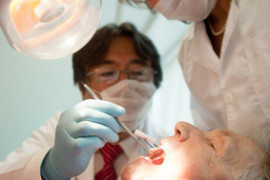New research brings more light to an unexplained link between periodontal disease, obesity, and diabetes. The study, published in the Journal of Periodontology, examined the association between a recently discovered adipocyte hormone, visfatin, and periodontal pathogens.
Visfatin is known to have pro-inflammatory functions and mimic the effects of insulin. It has been linked to many obesity-associated diseases, including Type 2 diabetes, obstructive sleep apnea, and cardiovascular disease. A study published earlier this year demonstrated that periodontal therapy reduces serum visfatin as well as HbA1c levels in patients with diabetes. However, there has been little research on the correlation between specific oral pathogens that cause periodontal disease and increased visfatin expression in gingival crevicular fluid.
In this most recent study, patients with periodontitis had significantly higher visfatin levels than those without. Interestingly, higher visfatin levels were only correlated with the pathogen Porphyromonas gingivalis and not with any of the other microorganisms tested. Researchers concluded that colonization of P. gingivalis in periodontal pockets appears to incite an increase in visfatin secretion.
Research has shown us that increased visfatin in the gingival crevicular fluid is associated with increased serum visfatin levels, leading researchers to suggest that visfatin is an inflammatory marker in periodontal disease.
The correlation between periodontal bacteria and this “obesity hormone” is not surprising. Diabetes, which is a common comorbid condition of obesity, has been inextricably and bi-directionally linked with periodontal disease. As we learn more and more about this new piece of the puzzle, the fact is that it is underlining what we already know: Addressing periodontal disease and the pathogens that cause it is absolutely critical in reducing the health complications of people with diabetes.



